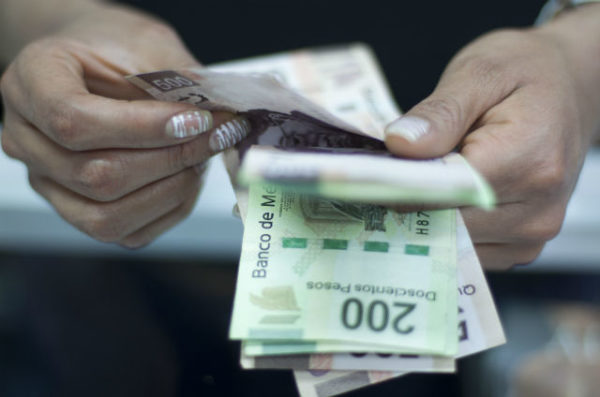The national currency depreciated 1.24 percent on the last day of the week.
MEXICO (Banco Base) – As investors assimilated a series of data in different regions it began to reflect the impact of the second wave of COVID-19 and the emergence of news on the U.S. fiscal front, which did not have a major effect on the market’s perception of risk.
According to data from the Bank of Mexico (Banxico), the Mexican currency depreciated this Friday by 1.24 percent, leaving the exchange rate 20.44 units per dollar in interbank trading.
During the week, the Mexican currency lost 2.54 percent, its second week of losses and its worst since September 25.
The currency reached a maximum of 20.4251 pesos per dollar at 12:35 pm. Meanwhile, the session’s minimum was observed at 20.0878 pesos at 7:46 am.
Since 8:00 am, the peso was pressured as stock indexes returned to the faint reds and marked their worst week since October. Part of the ailments in the markets is being attributed to retailers.
At bank counters, the dollar is selling at 20.61 pesos, according to Citibanamex. The Bloomberg index, which measures the greenback’s strength against a basket of ten currencies, rose 0.23 percent to 1,129 points.
The U.S. House of Representatives leader, Nancy Pelosi, said they are scheduling a vote for next week on the 2021 fiscal resolution, which means the first step in the process that could allow parts of President Joe Biden’s 1.9 trillion fiscal stimulus proposal to be approved.
In local economic data, the National Institute of Statistics and Geography’s (Inegi) timely estimate of the Mexican economy showed that Gross Domestic Product (GDP) increased 3.1 percent in quarterly comparison in the fourth quarter of 2020, which represented a 4.6 percent drop from 2019 levels.
Moreover, in annual comparison, during 2020, GDP contracted 8.5 percent with seasonally adjusted figures, in line with the latest International Monetary Fund (IMF) projections.
This would be the largest GDP drop since 1932 with the Great Depression and the second year of contraction.
GDP figures were also released in Europe. Preliminary growth for the last quarter of the year in France registered a quarterly decline of 1.3 percent, following the 18.5 percent advance during the third quarter.
At an annual rate, France’s GDP fell 5.0 percent in the final quarter of 2020, averaging a contraction of 8.3 percent for the year. Meanwhile, the German economy showed a slight quarterly growth of 0.1 percent, falling 3.9 percent at an annual rate and averaging a contraction of 5.3 percent in 2020.
“The data show that the economic recovery stagnated, and in some cases, a new contraction was observed due to the resurgence of coronavirus cases towards the end of the year,” said Gabriela Siller, director of economic analysis at Banco Base.



